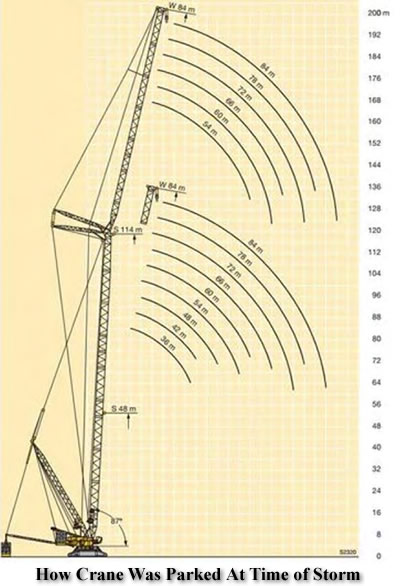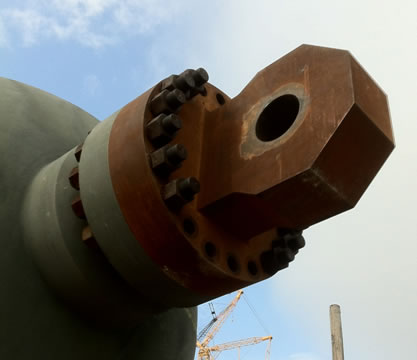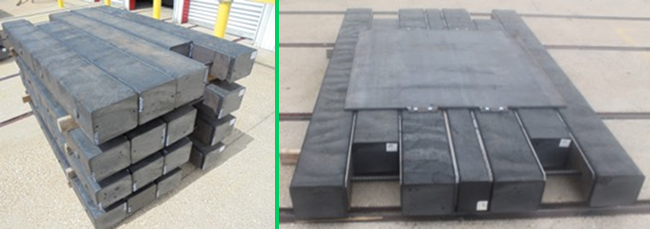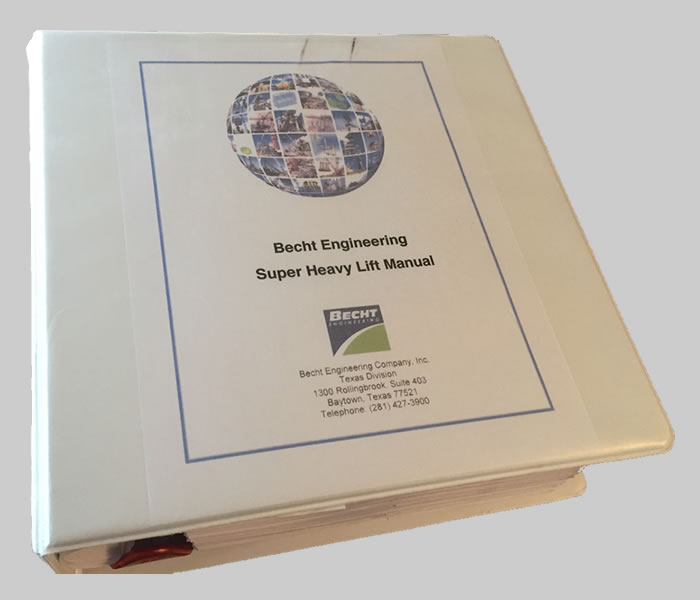Mecca Crane Collapse — “The worst crane accident in living memory”

I am sure most of you heard about the tragic crane accident that occurred in Mecca in September 2015. I was paying very close attention as the crane was very large and similar to the cranes we work with everyday here at Becht. We have utilized the same make and model on three projects just this year! The following is my understanding of the events, according to various articles and news reports.
Background
A Liebherr LR 11350 crawler crane with 600 feet of boom and jib was set up just outside Masjid al-Haram, the largest mosque in the world in the city of Mecca. There were storms in the region over the preceding week. Due to expected crowds, the Governor of Mecca ordered the crane to be moved away from public areas, thereby eliminating any hazard posed by the extremely tall crane. The contractor and crane owner is the Binladin Group, the World’s second largest construction company, founded by billionaire Mohammed Bin Laden. Statements have been made that the Binladin Group ignored the order and left the crane unattended with the unsecured boom/jib at a high angle on the day of the collapse.
The Accident
 On September 11, 2015 a strong storm blew in with winds of approximately 50 to 65 mph. The incident reportedly occurred shortly before 5:20 p.m. on Friday, one of the Mosque’s busiest times of the week. These high winds caused the boom/jib to rise up and over the back of the crane. Once the center of gravity passed center, the crane lost backward stability and the boom and jib toppled over onto the east side of the Mosque. The boom and jib crashed through the roof where many had gone for shelter from the storm.
On September 11, 2015 a strong storm blew in with winds of approximately 50 to 65 mph. The incident reportedly occurred shortly before 5:20 p.m. on Friday, one of the Mosque’s busiest times of the week. These high winds caused the boom/jib to rise up and over the back of the crane. Once the center of gravity passed center, the crane lost backward stability and the boom and jib toppled over onto the east side of the Mosque. The boom and jib crashed through the roof where many had gone for shelter from the storm.
The accident is quoted as “The worst crane accident in living memory”. Reports say that 111 persons were killed and an additional 394 were injured. The truly sad part is that the accident was preventable.
The cause of the collapse is attributed to leaving the crane unattended with over 600 feet of main boom and luffing jib at the highest possible angle, straight up!!! I warned of this danger in my September 2013 blog about loss of backward stability. With a boom at a “high angle” a number of things can cause the crane to lose backward stability, including high wind. This accident could have been avoided if the responsible parties would have followed the crane manufacturer’s instructions and lowered the boom and jib to a safe angle.
When wind is blowing against a boom, the combined area of all the main cords and lacings act as a sail. Even a light wind can have a catastrophic effect on the boom and jib. If the wind is blowing towards the back of the boom structure, the boom suspension is loaded and the crane can absorb significantly higher wind speeds without failure. On the other hand, if the wind is blowing towards the front of the boom, there is nothing to hold the boom down except the boom stop assemblies. The boom stop assemblies are designed to gently nudge the boom forward during normal operation in the event the boom gently contacts them at high angles. If there is a shock load or continuous force applied the entire crane and boom can become unstable and topple over. The problem is, we can’t depend on which direction the wind will blow so the appropriate action is to lower and secure the boom. This is especially important when the crane is unattended.
Penalties and Compensation of the Victims
Although an engineer for the Binladin group said that the crane was erected in “an extremely professional way”, and the accident was an “act of God,” the investigation report said “the main reason for the accident is the strong winds while the crane was in a wrong position”. The report pinned the blame partially on the contractor. However, a Royal Court announced the investigation suggested negligence on the part of the contractor, but concluded it found an absence of criminal suspicion. After receiving the report, King Salman sanctioned the contractor by prohibiting them from taking any new projects. In addition, the officers of the company and project management may not leave the country for an undetermined period.
King Salman ordered the Binladin Group to pay the families of each fatality one million Saudi riyals (USD 266,000). Next year, two family members of the deceased are to be the King’s guest for Hajj in 2016. The Saudi King has further ordered one million riyals be paid to each person that suffered a permanent disability and a half million riyal (USD 133,000) be paid to victims without lasting injuries. King Salman also decreed that the compensation payments do not prevent legal claims by the injured and families of the deceased.
Conclusion
This accident is tragic and unfortunate. What is worse, it was 100% avoidable. Booming the long boom/jib assembly down may have seemed like a difficult, complicated job at the time. However, compared to the death, pain and suffering that resulted it really wouldn’t have been that hard after all.
An emergency plan for weather related events is always necessary and a plan for parking the crane or leaving it unattended should be developed and implemented according to the manufacturer’s instructions. I believe that the managers and operators often see the giant crane structures as indestructible. I have to admit that it feels like working with a movable skyscraper. These giants are actually very fragile and demand respect, tender loving care and attention to every tiny detail.
Have a question or would like more information? Click the link below for more help.





Great article Joe, very well written and very well said. You can never point out these issues enough, even if it does sound like a broken record. Keep up the good work…
Thank You Mr. Collins for shedding “additional light” on this tragic crane accident. This accident should continually remind those responsible for crane safety to follow the crane manufacturers recommendations for properly configuring the crane for adverse weather conditions.
Good Luck Joe and be safe!
This is a perfect column and it properly described the reason of collapse.
However there is another key factor, that is evident from the first picture posted here.
The crane appears to be overturned including the tractor base. that indicates that there was no proper weight put on the base, that means it was not mounted at all. it was just left in a condition that it will definitely collapse if boom is raised and wind blows. This is clear negligence on the part of contractor and the person who says it was erected professionally, he is the main culprit.
Such a tragic incident that was totally avoidable. Everyone present with basic crane knowledge. Could have saved all those people. Hard to fathom such disrespect for human life.